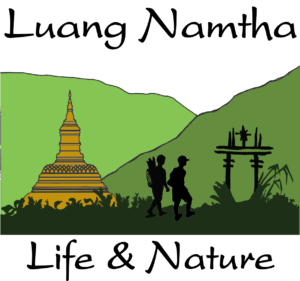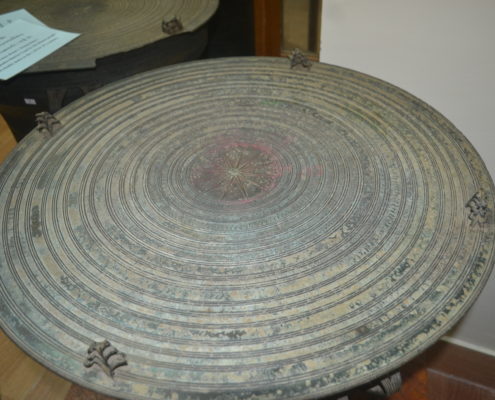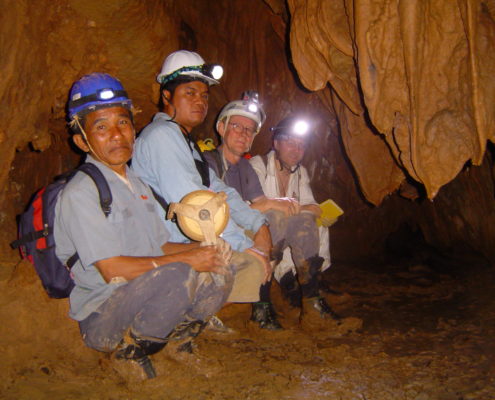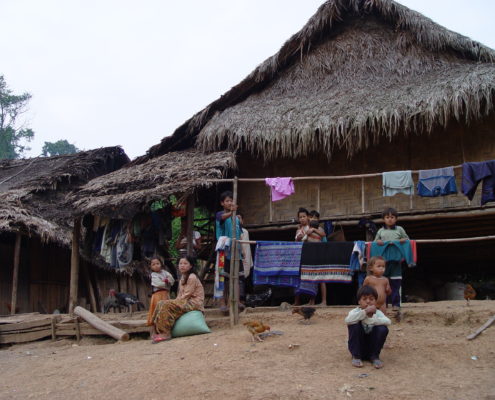Vieng Phoukha District is a mountainous district located in the south of Luang Namtha Province on Road 3 about 60 Km from Luang Namtha. It has a total land area of 1,866 square kilometers, bordering Namtha, Nalae and Long District as well as Bokeo Province.Most people in Vieng Phoukha live in small rural villages and practice agriculture as their main occupation. The ethnic minority groups in the district are Akha, Muser, Khmu, Hmong and Lao.
Vieng Phouka Town
Vieng Phouka is the town between Luang Namtha and Huay Xai, Bokeo. So if you travel overland exiting Laos via Huay Xai, or enter from Chiang Rai, Thailand, you will pass this town. It should be your first or last stop
Vieng Phoukha town is surrounded by limestone karts formations that have many interesting and beautiful caves. Formed by centuries of weathering that has gradually carved huge caverns out of the porous limestone, Vieng Phoukha’s caves have some of the most beautiful underground formations in northern Laos. During prehistoric times many of the caves might have been inhabited by people, but today they primarily support nesting swifts and thousands of roosting bats of over a dozen species. Some of the most accessible are the caves near Nam Eng Village (Tham Kao Rao) and the network of caverns at the base of the Phou Prasat limestone formation near Tha Louang Village.
Sites in and Around Vieng Phouka
Ancient Kilns and Bronze Drum (Kong bang) & Mahaphot Temple
Southwest of Mahaphot Temple are a number of earthen mounds that were once kilns, believed to have been used to manufacture bronze drums known as kong bang in Lao. These drums, a symbol of status and wealth, can be seen in the Luang Namtha Province Museum. There are also a number of privately owned drums remaining in Vieng Phoukha.
Mahaphot Temple and an ancient city are located on a hilltop just south of the main town. This and other abandoned temples in Vieng Phoukha are believed to date to the 16th-17th centuries. Surrounding this abandoned temple is a series of ramparts called “kou vieng” in Laos. Many people believed that these ruins are protected by spirits and if you take anything from the ancient sites you will suffer sickness and perhaps death.
Vieng Phoukha Museum
Vieng Phoukha Museum has an interesting collection of indigenous clothing, agricultural tools and household implements used in daily life. It also has antique Buddha artefacts and other sacred items.
Temples
Wander around town to see three important Buddhist temples. These are busy places during Lao New Year, the start and end of Buddhist Lent (Kaophansa-Orkphansa) and the annual Boat Racing Festival in October. If you are there at these times, you can see alms giving, candlelight processions and Buddha image watering.
Sacred Bor Kung (Shrimp Spring)
Directly behind the tourism office is the sacred forest that protects Bor Kung, the shrimp spring. The area is renowned for its clear waters and abundant fish, crabs and of course shrimp. Another nearby spring is Stewpot Spring, Bor Kang. Like a stewpot it is always brimming with water. Bor Kung is the source of the Sai stream which remains clear and cool during all seasons, flowing into the nearby Nam Jook River.











 Users Today : 70
Users Today : 70 This Month : 964
This Month : 964 This Year : 39597
This Year : 39597 Total Users : 85325
Total Users : 85325 Views Today : 186
Views Today : 186 Who's Online : 1
Who's Online : 1